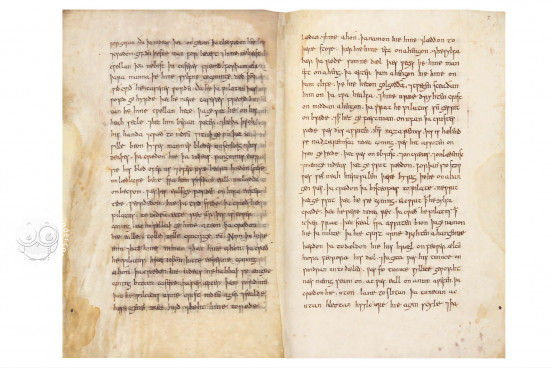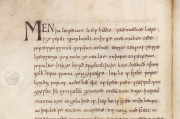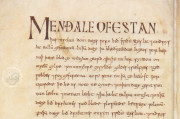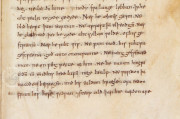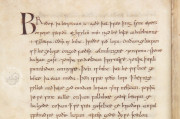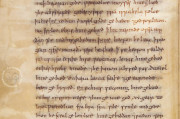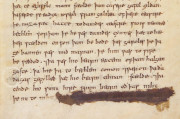Written by a monastic scribe in the tenth century, the Vercelli Book contains a collection of twenty-three prose homilies and six poems, all in various Anglo-Saxon dialects. Because of this, it is impossible to localize in England where the book was written, however, it was a foundation where the copyist would have had access to numerous exemplars from several regions. Large initials, two of which are zoomorphic, begin each text. Rubrication is limited to three uses, demarcate the book's three spells.
Codex Vercellensis is a rather large and finely-written manuscript despite it having no decorative program. The Insular script is well-formed and overall in good condition despite some intentional damage and a few missing pages. It preserves an important collection of Old English spiritual poems and homilies, including the essential poem, Dream of the Rood. Its value lies not in its appearance but in the texts with its collection forming one of the most important collections of Pre-Conquest vernacular texts.
An Anthology of Spiritual Texts in Old English
Most of the texts recorded in the Vercelli Book are anonymous prose homilies, most with general themes although two focus on the lives of particular saints. The complete poems, Andreas, The Fates of the Apostles by Cynewulf, Soul, and Body I, Dream of the Rood, and Elene by Cynewulf, all have spiritual or saintly subject matter that relates to the overall interest of the monastic copyist in texts for personal reflection and revelation. Andreas and Elene are translations of Latin works. Another version of Soul and Body is recorded in the Exeter Book. Together, these texts represent centuries of Anglo-Saxon spiritual literature.
Dream of the Rood
The Dream of the Rood is among the oldest examples of Anglo-Saxon literature. It has been attributed to both Cædmon and Cynewulf, though its authorship remains anonymous. It is an example of dream poetry, where the author of the poem is relating the experiences he has within a dream, in this case where he meets the True Cross, which relates its story of a tree, having been cut down and formed into a cross, bears the body of Jesus during the Crucifixion. Verses from this poem are carved in runes on the eighth-century Ruthwell Cross.
An Anglo-Saxon Manuscript in Italy
The first record of the Vercelli Book is from 1822 when it was found by Frederik Blume and described in his Iter Italicum. It is unknown how long the manuscript had been in Italy. It may have been taken there by Jacopo Guala Bicchieri, bishop of Vercelli, who served as papal legate in England from 1216–1218. A hospice for English pilgrims in Vercelli may also explain the presence of the book there.
We have 1 facsimile edition of the manuscript "The Vercelli Book": The Vercelli Book facsimile edition, published by Rosenkilde and Bagger, 1976
Request Info / Price
